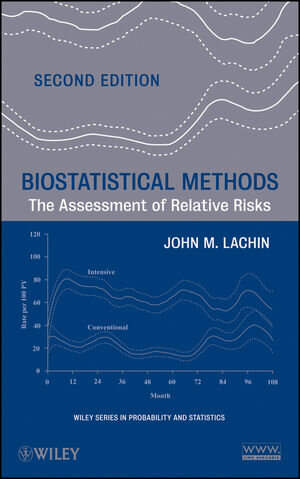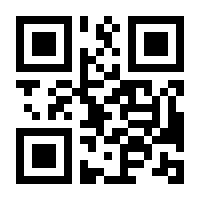
×
![Buchcover ISBN 9780470907405]()
„Biostatistical methods, second edition is an excellent book forbiostatistics courses at the graduate level. It is also aninvaluable reference for biostatisticians, applied statisticians, and epidemiologists.“ (Mathematical Reviews, 2011)
„The author of this book has made a tremendous effort incovering a gamut of tests, methods, and ideas for biostatisticalproblem solving . . . In conclusion, the book is recommended to allin biostatistics as a technical reference.“ (Journal ofBiopharmaceutical Statistics, 1 September 2012)
„... Biostatistics is set apart from other statistics specialtiesby its focus on the assessment of risks and relative risks throughclinical research,“ states Lachin (George Washington U.) in thepreface to the first edition (2001). He developed this graduatetext to support a course he launched as a joint initiative of theuniversity's department of statistics, its Biostatistics Center, and the School of Public Health and Health Services. Coverageincludes discussion of biostatistics and biomedical science, relative risk estimates and tests for independent groups, samplesize, stratified adjusted analysis, case-control and matchedstudies, applications of maximum likelihood and efficient scores, among other topics." (Book News Inc., February2011)
Praise for the First Edition
„. . . an excellent textbook . . . an indispensable referencefor biostatisticians and epidemiologists.“
--International Statistical Institute
A new edition of the definitive guide to classical and modernmethods of biostatistics
Biostatistics consists of various quantitative techniques thatare essential to the description and evaluation of relationshipsamong biologic and medical phenomena. Biostatistical Methods: The Assessment of Relative Risks, Second Edition develops basicconcepts and derives an expanded array of biostatistical methodsthrough the application of both classical statistical tools andmore modern likelihood-based theories. With its fluid and balancedpresentation, the book guides readers through the importantstatistical methods for the assessment of absolute and relativerisks in epidemiologic studies and clinical trials withcategorical, count, and event-time data.
Presenting a broad scope of coverage and the latest research onthe topic, the author begins with categorical data analysis methodsfor cross-sectional, prospective, and retrospective studies ofbinary, polychotomous, and ordinal data. Subsequent chapterspresent modern model-based approaches that include unconditionaland conditional logistic regression; Poisson and negative binomialmodels for count data; and the analysis of event-time dataincluding the Cox proportional hazards model and itsgeneralizations. The book now includes an introduction to mixedmodels with fixed and random effects as well as expanded methodsfor evaluation of sample size and power. Additional new topicsfeatured in this Second Edition include:
* Establishing equivalence and non-inferiority
* Methods for the analysis of polychotomous and ordinal data, including matched data and the Kappa agreement index
* Multinomial logistic for polychotomous data and proportionalodds models for ordinal data
* Negative binomial models for count data as an alternative tothe Poisson model
* GEE models for the analysis of longitudinal repeated measuresand multivariate observations
Throughout the book, SAS is utilized to illustrate applicationsto numerous real-world examples and case studies. A related websitefeatures all the data used in examples and problem sets along withthe author's SAS routines.
Biostatistical Methods, Second Edition is an excellentbook for biostatistics courses at the graduate level. It is also aninvaluable reference for biostatisticians, applied statisticians, and epidemiologists.
„. . . an excellent textbook . . . an indispensable referencefor biostatisticians and epidemiologists.“
--International Statistical Institute
A new edition of the definitive guide to classical and modernmethods of biostatistics
Biostatistics consists of various quantitative techniques thatare essential to the description and evaluation of relationshipsamong biologic and medical phenomena. Biostatistical Methods: The Assessment of Relative Risks, Second Edition develops basicconcepts and derives an expanded array of biostatistical methodsthrough the application of both classical statistical tools andmore modern likelihood-based theories. With its fluid and balancedpresentation, the book guides readers through the importantstatistical methods for the assessment of absolute and relativerisks in epidemiologic studies and clinical trials withcategorical, count, and event-time data.
Presenting a broad scope of coverage and the latest research onthe topic, the author begins with categorical data analysis methodsfor cross-sectional, prospective, and retrospective studies ofbinary, polychotomous, and ordinal data. Subsequent chapterspresent modern model-based approaches that include unconditionaland conditional logistic regression; Poisson and negative binomialmodels for count data; and the analysis of event-time dataincluding the Cox proportional hazards model and itsgeneralizations. The book now includes an introduction to mixedmodels with fixed and random effects as well as expanded methodsfor evaluation of sample size and power. Additional new topicsfeatured in this Second Edition include:
* Establishing equivalence and non-inferiority
* Methods for the analysis of polychotomous and ordinal data, including matched data and the Kappa agreement index
* Multinomial logistic for polychotomous data and proportionalodds models for ordinal data
* Negative binomial models for count data as an alternative tothe Poisson model
* GEE models for the analysis of longitudinal repeated measuresand multivariate observations
Throughout the book, SAS is utilized to illustrate applicationsto numerous real-world examples and case studies. A related websitefeatures all the data used in examples and problem sets along withthe author's SAS routines.
Biostatistical Methods, Second Edition is an excellentbook for biostatistics courses at the graduate level. It is also aninvaluable reference for biostatisticians, applied statisticians, and epidemiologists.



